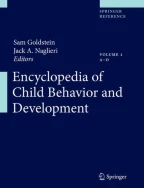
The Autism Behavior Checklist (ABC) was designed to offer a method to more objectively identify autism in children. The scale utilizes an observer’s rating of the child’s behavior to quantify behaviors typically associated with Autism.
The ABC was developed as a clinical measure to screen for autism in individuals 3–35-years-of-age. The scale was developed in 1980 and has not undergone revision since then. The ABC consists of 57 item and 5 scales (1) Sensory, (2) Relating, (3) Body and Object use, (4) Language and (5) Social and Self-help [11].
The items included in the ABC were grouped on the five subscales primarily based on face validity. The items themselves were chosen from many sources, including Kanner’s [6] article which first outlined autism and Lovaas et al. [8] work on autism.. After items were written and finalized, internationally recognized experts in the field of autism were asked to provide feedback for the scale. The last stage of.